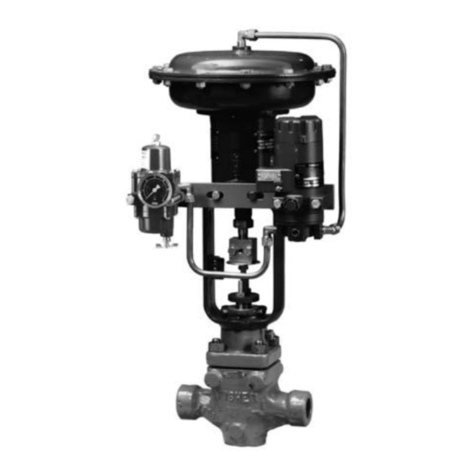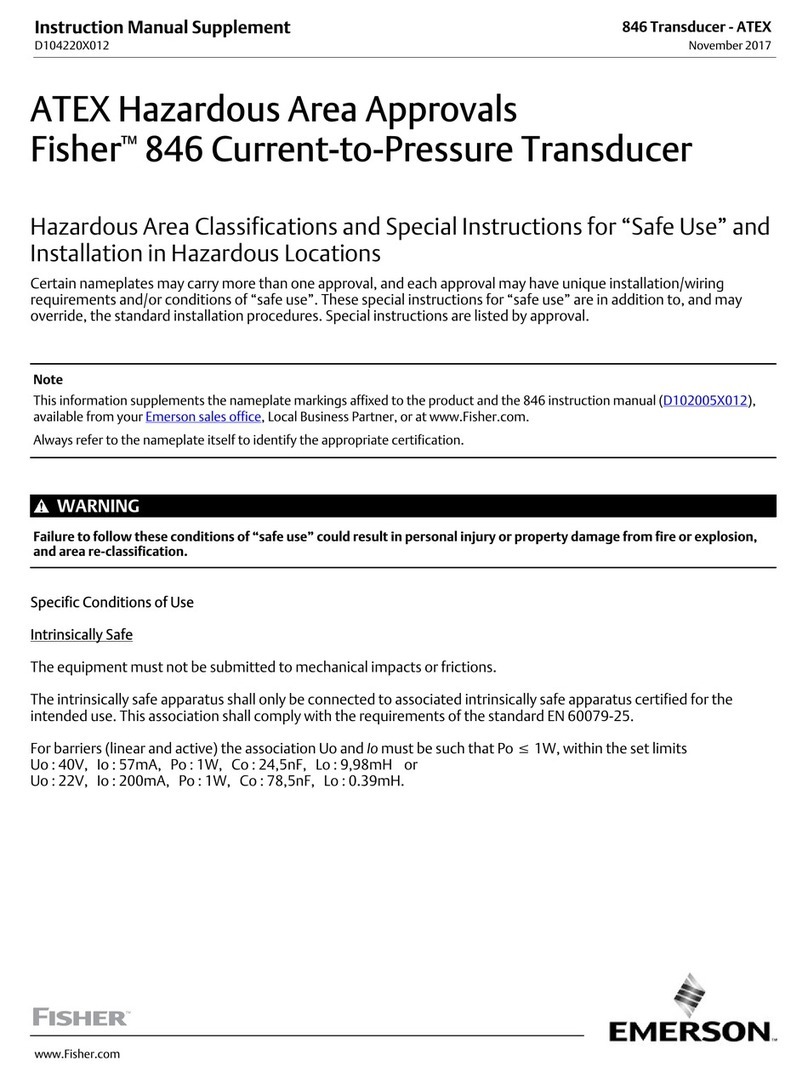
i2P-100 Transducer
Instruction Manual
Form 5777
September 2004
8
Vent
WARNING
This unit vents the supply medium into
the surrounding atmosphere. When
installing this unit in a non-hazardous
location with natural gas as the supply
medium, you must remotely vent this
unit to a safe location. Failure to do so
could result in personal injury or
property damage from fire or
explosion, and area re-classification.
When installing this unit in a
hazardous location remote venting of
the unit may be required, depending
upon the area classification, and as
specified by the requirements of local,
regional, and federal codes, rules and
regulations. Failure to do so when
necessary could result in personal
injury or property damage from fire or
explosion, and area re-classification.
Vent line piping should comply with
local and regional codes and should
be as short as possible with adequate
inside diameter and few bends to
reduce case pressure buildup.
If a remote vent is required, the vent line must be as
short as possible with a minimum number of bends
and elbows. To connect a remote vent, remove the
plastic vent (key 71, figure 13). The vent connection
is 0.25 inch NPT female. Use 0.375 inch tubing to
provide a remote vent.
Electrical Connections
WARNING
For explosion-proof applications, or
when using natural gas as the supply
medium, disconnect power before
removing the housing cap. Personal
injury or property damage from fire or
explosion may result if power is not
disconnected before removing the cap.
For intrinsically safe installations, refer
to the nameplate or to instructions
provided by the barrier manufacturer,
for proper wiring and installation.
4 - 20 mA
6.8V 6.8V 4V
40 Ohm
Figure 9. Equivalent Circuit
Use the 0.5 inch NPT conduit connection, shown in
figure 5, for installation of field wiring.
Refer to figures 8, 9, and 10 when connecting field
wiring from the control device to the transducer.
Connect the positive wire from the control device to
the transducer ‘‘+’’ terminal and, the negative wire
from the control device to the transducer ‘‘-’’
terminal. Do not overtighten the terminal screws.
Maximum torque is 0.45 NSm (4 lbfSin.). Connect the
transducer grounding terminal to earth ground.
Grounding terminals are provided both inside and
outside the transducer housing.
Operating Information
The normal mode of operation for Type i2P-100
transducer requires that the pneumatic output
pressure be piped to the final control element. If this
is not done the resulting pneumatic output will vent
to the atmosphere.
Calibration
WARNING
On explosion-proof instruments, or
when using natural gas as the supply
medium, remove electrical power
before removing either of the the
housing caps in a hazardous area.
Personal injury or property damage
may result from fire or explosion if
power is applied to the transducer with
the cap removed in a hazardous area.
For intrinsically safe areas, current
monitoring during operation must be
with a meter approved for use in
hazardous areas.

































